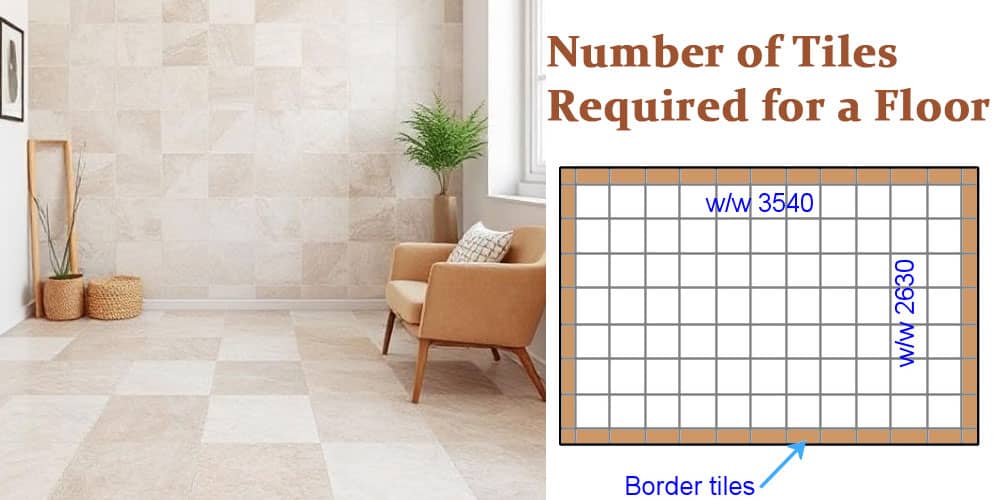How to Find Out the Number of Tiles Required for a Floor

When it comes to flooring renovation or installation, one of the most critical steps is determining the exact number of tiles required. Estimating the right amount not only helps you avoid wastage but also ensures you don't run short mid-project.
Step 1: Measure the Floor Area
- Accurate Measurement: Start by measuring the length and width of the floor using a tape measure. For irregular-shaped areas, break them into smaller rectangular sections.
- Formula to Calculate Area: Area = Length x Width
- Convert Units: Ensure all measurements are in the same units (e.g., feet, meters, or inches).
Step 2: Determine the Tile Size
- Tile Dimensions: Standard tile sizes include 12x12 inches, 24x24 inches, or 18x18 inches. Choose the tile size that best fits your aesthetic preference.
- Tile Area Calculation: Tile Area = Tile Length x Tile Width
Step 3: Calculate the Number of Tiles Needed
- Basic Formula: Number of Tiles = Floor Area / Tile Area
- Add Wastage: It's recommended to add a 10-15% buffer for cuts, breakages, or design adjustments. Total Tiles Required = Number of Tiles x 1.15
Example Calculation
- Floor Dimensions: 20 feet x 15 feet
- Floor Area = 20 x 15 = 300 sq. ft.
- Tile Size: 12 inches x 12 inches (1 sq. ft.)
- Number of Tiles = 300 ÷ 1 = 300 tiles
- Add 10% Wastage:
- 300 x 1.10 = 330 tiles
Additional Tips for Tile Calculation
- For Complex Layouts: Use grid paper or a digital floor planning tool.
- Patterned Tiles: Ensure alignment of patterns by ordering additional tiles.
- Account for Grout Lines: Factor in the space for grout which may slightly reduce the number of tiles.
Conclusion
By accurately measuring and using the simple formulas mentioned above, you can efficiently determine the number of tiles required for your flooring project. This will save time, money, and reduce material wastage.
